Global VR market is expected to reach USD 56.25 Billion by 2025 at a CAGR of 34.2% during the forecast period from 2018-2025. Use of improved technology and increasing digitization and heavy investments in the VR market to meet out rising need are likely to boost the market growth.
Market Overview:
Virtual reality (VR) is defined as an interactive computer-generated experience undertaken within a simulated environment. It includes mainly auditory and visual feedback, but may also permit other types of sensory feedback like haptic. This immersive environment can be similar to the real world or it can be fantastical. Augmented reality systems are also considered as a form of VR which layers virtual information over a live camera feed into a headset or through a smartphone or tablet device which helps the user to view three-dimensional images. Nowadays, VR technology incorporates virtual reality headsets or multi-projected environments, sometimes in combination with physical environments or props, to generate realistic images, sounds and other sensations that simulate a user's physical presence in a virtual or imaginary environment.
Report Description:
Market Dynamics:
Drivers:
Restraints:
Opportunities:
Challenges:
Global VR Market Key Findings:
All the segments have been analysed on global, regional and country basis. The study includes the analysis of more than 30 countries for each segment.
Segmentation Analysis:
The VR market is segmented on the basis of technology, application and device type.
Regional Segmentation Analysis:
The regions analysed for the market include North America, Europe, South America, Asia Pacific, and Middle East and Africa. North America region dominated the global VR market with USD 2.25 Billion in 2017 where as the Asia Pacific rapidly growing region in the market.
Global VR Market Competitive Analysis:
Key players in the VR market are Sony, Oculus, Samsung Electronics, HTC, Google, PTC, Microsoft, Wikitude, DAQRI, Zugara, Blippar, Osterhout Design Group, Magic Leap, Upskill, Continental, Visteon, Eon Reality, Vuzix, and MAXST. For instance, HTC just announced the latest addition to its VR headset catalog, the Vive Focus Plus, which is targeting Enterprise users.
*All our reports are customizable as per customer requirements
This study forecasts revenue growth and volume at global, regional, and country levels from 2015 to 2025. Fior Market Research has segmented the global VR market on the basis of below-mentioned segments:
Global VR Market, By Technology:
Global VR Market, By Device Type:
Global VR Market, By Application:
Global VR Market, By Regions:
1. Introduction
1.1. Objectives of the Study
1.2. Market Definition
1.3. Research Scope
1.4. Currency
2. Research Methodology and Assumptions
3. Executive Summary
4. Premium Insights
4.1. Porter’s Five Forces Analysis
4.2. Value Chain Analysis
4.3. Top Investment Pockets
4.3.1. Market Attractiveness Analysis By Technology
4.3.2. Market Attractiveness Analysis By Device Type
4.3.3. Market Attractiveness Analysis By Application
4.3.4. Market Attractiveness Analysis By Region
4.4. Industry Trends
5. Market Dynamics
5.1. Market Evaluation
5.2. Drivers
5.2.1. Use of improved technology and increasing digitization
5.2.2. Use of head mount displays in the gaming and entertainment sector
5.2.3. Heavy investments in the VR market to meet out rising need
5.2.4. Availability of affordable VR devices
5.3. Restraints
5.3.1. Low resolution and lack of movement causes health concerns
5.4. Opportunities
5.4.1. Incorporation of head mount displays in healthcare and architectural applications
5.5. Challenges
5.5.1. Developing user-friendly VR systems
6. Global VR Market Analysis and Forecast, By Technology
6.1. Segment Overview
6.2. Nonimmersive Technology
6.3. Semi-Immersive and Fully Immersive Technology
7. Global VR Market Analysis and Forecast, By Device Type
7.1. Segment Overview
7.2. Head-Mounted Display
7.3. Gesture-Tracking Device
7.3.1. Data Gloves
7.3.2. Others
7.4. Projector & Display Wall
8. Global VR Market Analysis and Forecast, By Application
8.1. Segment Overview
8.2. Consumer
8.2.1. Gaming and Entertainment
8.3. Commercial
8.3.1. Retail
8.3.2. Education and Training
8.3.3. Travel and Tourism
8.3.4. Advertising
8.3.5. Use-Cases in Commercial
8.4. Enterprise
8.5. Healthcare
8.5.1. Surgery
8.5.2. Patient Care Management
8.5.3. Fitness Management
8.5.4. Pharmacy Management
8.5.5. Medical Training and Education
8.6. Aerospace & Defense
8.7. Others
8.7.1. Automotive
8.7.2. Real Estate (Architecture and Building Design)
8.7.3. Geospatial Mining
9. Global VR Market Analysis and Forecast, By Regional Analysis
9.1. Segment Overview
9.2. North America
9.2.1. U.S.
9.2.2. Canada
9.2.3. Mexico
9.3. Europe
9.3.1. Germany
9.3.2. France
9.3.3. Sweden
9.3.4. Netherlands
9.3.5. U.K.
9.3.6. Italy
9.3.7. Spain
9.3.8. Turkey
9.3.9. Switzerland
9.3.10. Belgium
9.3.11. Rest of Europe
9.4. Asia-Pacific
9.4.1. Japan
9.4.2. China
9.4.3. India
9.4.4. South Korea
9.4.5. Australia
9.4.6. Singapore
9.4.7. Malaysia
9.4.8. Thailand
9.4.9. Indonesia
9.4.10. Philippines
9.4.11. Rest of Asia-Pacific
9.5. South America
9.5.1. Brazil
9.5.2. Argentina
9.5.3. Colombia
9.5.4. Rest of South America
9.6. Middle East and Africa
9.6.1. Saudi Arabia
9.6.2. UAE
9.6.3. Egypt
9.6.4. Nigeria
9.6.5. South Africa
9.6.6. Rest of Middle East and Africa
10. Global VR Market-Competitive Landscape
10.1. Overview
10.2. Market Share of Key Players in the VR Market
10.2.1. Global Company Market Share
10.2.2. North America Company Market Share
10.2.3. Europe Company Market Share
10.2.4. APAC Company Market Share
10.3. Competitive Situations and Trends
10.3.1. Device Type Launches and Developments
10.3.2. Partnerships, Collaborations, and Agreements
10.3.3. Mergers & Acquisitions
10.3.4. Expansions
11. Company Profiles
11.1. Sony
11.1.1. Business Overview
11.1.2. Company Snapshot
11.1.3. Company Market Share Analysis
11.1.4. Company Product Portfolio
11.1.5. Recent Developments
11.1.6. SWOT Analysis
11.2. Oculus
11.2.1. Business Overview
11.2.2. Company Snapshot
11.2.3. Company Market Share Analysis
11.2.4. Company Product Portfolio
11.2.5. Recent Developments
11.2.6. SWOT Analysis
11.3. Samsung Electronics
11.3.1. Business Overview
11.3.2. Company Snapshot
11.3.3. Company Market Share Analysis
11.3.4. Company Product Portfolio
11.3.5. Recent Developments
11.3.6. SWOT Analysis
11.4. HTC
11.4.1. Business Overview
11.4.2. Company Snapshot
11.4.3. Company Market Share Analysis
11.4.4. Company Product Portfolio
11.4.5. Recent Developments
11.4.6. SWOT Analysis
11.5. Google
11.5.1. Business Overview
11.5.2. Company Snapshot
11.5.3. Company Market Share Analysis
11.5.4. Company Product Portfolio
11.5.5. Recent Developments
11.5.6. SWOT Analysis
11.6. PTC
11.6.1. Business Overview
11.6.2. Company Snapshot
11.6.3. Company Market Share Analysis
11.6.4. Company Product Portfolio
11.6.5. Recent Developments
11.6.6. SWOT Analysis
11.7. Microsoft
11.7.1. Business Overview
11.7.2. Company Snapshot
11.7.3. Company Market Share Analysis
11.7.4. Company Product Portfolio
11.7.5. Recent Developments
11.7.6. SWOT Analysis
11.8. Wikitude
11.8.1. Business Overview
11.8.2. Company Snapshot
11.8.3. Company Market Share Analysis
11.8.4. Company Product Portfolio
11.8.5. Recent Developments
11.8.6. SWOT Analysis
11.9. DAQRI
11.9.1. Business Overview
11.9.2. Company Snapshot
11.9.3. Company Market Share Analysis
11.9.4. Company Product Portfolio
11.9.5. Recent Developments
11.9.6. SWOT Analysis
11.10. Zugara
11.10.1. Business Overview
11.10.2. Company Snapshot
11.10.3. Company Market Share Analysis
11.10.4. Company Product Portfolio
11.10.5. Recent Developments
11.10.6. SWOT Analysis
11.11. Blippar
11.11.1. Business Overview
11.11.2. Company Snapshot
11.11.3. Company Market Share Analysis
11.11.4. Company Product Portfolio
11.11.5. Recent Developments
11.11.6. SWOT Analysis
11.12. Osterhout Design Group
11.12.1. Business Overview
11.12.2. Company Snapshot
11.12.3. Company Market Share Analysis
11.12.4. Company Product Portfolio
11.12.5. Recent Developments
11.12.6. SWOT Analysis
11.13. Magic Leap
11.13.1. Business Overview
11.13.2. Company Snapshot
11.13.3. Company Market Share Analysis
11.13.4. Company Product Portfolio
11.13.5. Recent Developments
11.13.6. SWOT Analysis
11.14. Upskill
11.14.1. Business Overview
11.14.2. Company Snapshot
11.14.3. Company Market Share Analysis
11.14.4. Company Product Portfolio
11.14.5. Recent Developments
11.14.6. SWOT Analysis
11.15. Continental
11.15.1. Business Overview
11.15.2. Company Snapshot
11.15.3. Company Market Share Analysis
11.15.4. Company Product Portfolio
11.15.5. Recent Developments
11.15.6. SWOT Analysis
11.16. Visteon
11.16.1. Business Overview
11.16.2. Company Snapshot
11.16.3. Company Market Share Analysis
11.16.4. Company Product Portfolio
11.16.5. Recent Developments
11.16.6. SWOT Analysis
11.17. Eon Reality
11.17.1. Business Overview
11.17.2. Company Snapshot
11.17.3. Company Market Share Analysis
11.17.4. Company Product Portfolio
11.17.5. Recent Developments
11.17.6. SWOT Analysis
11.18. Vuzix
11.18.1. Business Overview
11.18.2. Company Snapshot
11.18.3. Company Market Share Analysis
11.18.4. Company Product Portfolio
11.18.5. Recent Developments
11.18.6. SWOT Analysis
11.19. MAXST
11.19.1. Business Overview
11.19.2. Company Snapshot
11.19.3. Company Market Share Analysis
11.19.4. Company Product Portfolio
11.19.5. Recent Developments
11.19.6. SWOT Analysis
List of Figures
1. Global VR Market Segmentation
2. VR Market: Research Methodology
3. Market Size Estimation Methodology: Bottom-Up Approach
4. Market Size Estimation Methodology: Top-Down Approach
5. Data Triangulation
6. Porter’s Five Forces Analysis
7. Value Chain Analysis
8. Global VR Market Attractiveness Analysis By Technology
9. Global VR Market Attractiveness Analysis By Device Type
10. Global VR Market Attractiveness Analysis By Application
11. Global VR Market Attractiveness Analysis By Region
12. Global VR Market: Dynamics
13. Global VR Market Share by Technology (2017 & 2025)
14. Global VR Market Share by Device Type (2017 & 2025)
15. Global VR Market Share by Application (2017 & 2025)
16. Global VR Market Share by Region (2017 & 2025)
17. Global VR Market Share by Company (2018)
List of Table
1. Global VR Market, By Technology, 2015–2025 (USD Billion)
2. Global Nonimmersive VR Market, By Region, 2015–2025 (USD Billion)
3. Global Semi-Immersive Fully Immersive Technology VR Market, By Region, 2015–2025 (USD Billion)
4. Global Fully Immersive VR Market, By Region, 2015–2025 (USD Billion)
5. Global VR Market, By Device Type, 2015–2025 (USD Billion)
6. Global VR Market, By Gesture-Tracking Device, 2015–2025 (USD Billion)
7. Global Head-Mounted Display VR Market, By Region, 2015–2025 (USD Billion)
8. Global Gesture-Tracking Device VR Market, By Region, 2015–2025 (USD Billion) Mobile Scanner
9. Global Projector & Display Wall VR Market, By Region, 2015–2025 (USD Billion)
10. Global VR Market, By Application, 2015–2025 (USD Billion)
11. Global VR Market, By Consumer, 2015–2025 (USD Billion)
12. Global VR Market, By Commercial, 2015–2025 (USD Billion)
13. Global VR Market, By Healthcare, 2015–2025 (USD Billion)
14. Global VR Market, By Others, 2015–2025 (USD Billion)
15. Global Consumer VR Market, By Region, 2015–2025 (USD Billion)
16. Global Commercial VR Market, By Region, 2015–2025 (USD Billion)
17. Global Healthcare VR Market, By Region, 2015–2025 (USD Billion)
18. Global Others VR Market, By Region, 2015–2025 (USD Billion)
19. Global VR Market, By Region, 2015–2025 (USD Billion)
20. North America VR Market, By Technology, 2015–2025 (USD Billion)
21. North America VR Market, By Device Type, 2015–2025 (USD Billion)
22. North America VR Market, By Application, 2015–2025 (USD Billion)
23. U.S. VR Market, By Technology, 2015–2025 (USD Billion)
24. U.S. VR Market, By Device Type, 2015–2025 (USD Billion)
25. U.S. VR Market, By Application, 2015–2025 (USD Billion)
26. Canada VR Market, By Technology, 2015–2025 (USD Billion)
27. Canada VR Market, By Device Type, 2015–2025 (USD Billion)
28. Canada VR Market, By Application, 2015–2025 (USD Billion)
29. Mexico VR Market, By Technology, 2015–2025 (USD Billion)
30. Mexico VR Market, By Device Type, 2015–2025 (USD Billion)
31. Mexico VR Market, By Application, 2015–2025 (USD Billion)
32. Europe VR Market, By Technology, 2015–2025 (USD Billion)
33. Europe VR Market, By Device Type, 2015–2025 (USD Billion)
34. Europe VR Market, By Application, 2015–2025 (USD Billion)
35. Germany VR Market, By Technology, 2015–2025 (USD Billion)
36. Germany VR Market, By Device Type, 2015–2025 (USD Billion)
37. Germany VR Market, By Application, 2015–2025 (USD Billion)
38. France VR Market, By Technology, 2015–2025 (USD Billion)
39. France VR Market, By Device Type, 2015–2025 (USD Billion)
40. France VR Market, By Application, 2015–2025 (USD Billion)
41. Sweden VR Market, By Technology, 2015–2025 (USD Billion)
42. Sweden VR Market, By Device Type, 2015–2025 (USD Billion)
43. Sweden VR Market, By Application, 2015–2025 (USD Billion)
44. Netherlands VR Market, By Technology, 2015–2025 (USD Billion)
45. Netherlands VR Market, By Device Type, 2015–2025 (USD Billion)
46. Netherlands VR Market, By Application, 2015–2025 (USD Billion)
47. U.K. VR Market, By Technology, 2015–2025 (USD Billion)
48. U.K. VR Market, By Device Type, 2015–2025 (USD Billion)
49. U.K. VR Market, By Application, 2015–2025 (USD Billion)
50. Italy VR Market, By Technology, 2015–2025 (USD Billion)
51. Italy VR Market, By Device Type, 2015–2025 (USD Billion)
52. Italy VR Market, By Application, 2015–2025 (USD Billion)
53. Spain VR Market, By Technology, 2015–2025 (USD Billion)
54. Spain VR Market, By Device Type, 2015–2025 (USD Billion)
55. Spain VR Market, By Application, 2015–2025 (USD Billion)
56. Turkey VR Market, By Technology, 2015–2025 (USD Billion)
57. Turkey VR Market, By Device Type, 2015–2025 (USD Billion)
58. Turkey VR Market, By Application, 2015–2025 (USD Billion)
59. Switzerland VR Market, By Technology, 2015–2025 (USD Billion)
60. Switzerland VR Market, By Device Type, 2015–2025 (USD Billion)
61. Switzerland VR Market, By Application, 2015–2025 (USD Billion)
62. Belgium VR Market, By Technology, 2015–2025 (USD Billion)
63. Belgium VR Market, By Device Type, 2015–2025 (USD Billion)
64. Belgium VR Market, By Application, 2015–2025 (USD Billion)
65. Asia Pacific VR Market, By Technology, 2015–2025 (USD Billion)
66. Asia Pacific VR Market, By Device Type, 2015–2025 (USD Billion)
67. Asia Pacific VR Market, By Application, 2015–2025 (USD Billion)
68. Japan VR Market, By Technology, 2015–2025 (USD Billion)
69. Japan VR Market, By Device Type, 2015–2025 (USD Billion)
70. Japan VR Market, By Application, 2015–2025 (USD Billion)
71. China VR Market, By Technology, 2015–2025 (USD Billion)
72. China VR Market, By Device Type, 2015–2025 (USD Billion)
73. China VR Market, By Application, 2015–2025 (USD Billion)
74. India VR Market, By Technology, 2015–2025 (USD Billion)
75. India VR Market, By Device Type, 2015–2025 (USD Billion)
76. India VR Market, By Application, 2015–2025 (USD Billion)
77. South Korea VR Market, By Technology, 2015–2025 (USD Billion)
78. South Korea VR Market, By Device Type, 2015–2025 (USD Billion)
79. South Korea VR Market, By Application, 2015–2025 (USD Billion)
80. Australia VR Market, By Technology, 2015–2025 (USD Billion)
81. Australia VR Market, By Device Type, 2015–2025 (USD Billion)
82. Australia VR Market, By Application, 2015–2025 (USD Billion)
83. Singapore VR Market, By Technology, 2015–2025 (USD Billion)
84. Singapore VR Market, By Device Type, 2015–2025 (USD Billion)
85. Singapore VR Market, By Application, 2015–2025 (USD Billion)
86. Malaysia VR Market, By Technology, 2015–2025 (USD Billion)
87. Malaysia VR Market, By Device Type, 2015–2025 (USD Billion)
88. Malaysia VR Market, By Application, 2015–2025 (USD Billion)
89. Thailand VR Market, By Technology, 2015–2025 (USD Billion)
90. Thailand VR Market, By Device Type, 2015–2025 (USD Billion)
91. Thailand VR Market, By Application, 2015–2025 (USD Billion)
92. Indonesia VR Market, By Technology, 2015–2025 (USD Billion)
93. Indonesia VR Market, By Device Type, 2015–2025 (USD Billion)
94. Indonesia VR Market, By Application, 2015–2025 (USD Billion)
95. Philippines VR Market, By Technology, 2015–2025 (USD Billion)
96. Philippines VR Market, By Device Type, 2015–2025 (USD Billion)
97. Philippines VR Market, By Application, 2015–2025 (USD Billion)
98. South America VR Market, By Technology, 2015–2025 (USD Billion)
99. South America VR Market, By Device Type, 2015–2025 (USD Billion)
100. South America VR Market, By Application, 2015–2025 (USD Billion)
101. Brazil VR Market, By Technology, 2015–2025 (USD Billion)
102. Brazil VR Market, By Device Type, 2015–2025 (USD Billion)
103. Brazil VR Market, By Application, 2015–2025 (USD Billion)
104. Argentina VR Market, By Technology, 2015–2025 (USD Billion)
105. Argentina VR Market, By Device Type, 2015–2025 (USD Billion)
106. Argentina VR Market, By Application, 2015–2025 (USD Billion)
107. Colombia VR Market, By Technology, 2015–2025 (USD Billion)
108. Colombia VR Market, By Device Type, 2015–2025 (USD Billion)
109. Colombia VR Market, By Application, 2015–2025 (USD Billion)
110. Middle East and Africa VR Market, By Technology, 2015–2025 (USD Billion)
111. Middle East and Africa VR Market, By Device Type, 2015–2025 (USD Billion)
112. Middle East and Africa VR Market, By Application, 2015–2025 (USD Billion)
113. Saudi Arabia VR Market, By Technology, 2015–2025 (USD Billion)
114. Saudi Arabia VR Market, By Device Type, 2015–2025 (USD Billion)
115. Saudi Arabia VR Market, By Application, 2015–2025 (USD Billion)
116. UAE VR Market, By Technology, 2015–2025 (USD Billion)
117. UAE VR Market, By Device Type, 2015–2025 (USD Billion)
118. UAE VR Market, By Application, 2015–2025 (USD Billion)
119. Egypt VR Market, By Technology, 2015–2025 (USD Billion)
120. Egypt VR Market, By Device Type, 2015–2025 (USD Billion)
121. Egypt VR Market, By Application, 2015–2025 (USD Billion)
122. Nigeria VR Market, By Technology, 2015–2025 (USD Billion)
123. Nigeria VR Market, By Device Type, 2015–2025 (USD Billion)
124. Nigeria VR Market, By Application, 2015–2025 (USD Billion)
125. South Africa VR Market, By Technology, 2015–2025 (USD Billion)
126. South Africa VR Market, By Device Type, 2015–2025 (USD Billion)
127. South Africa VR Market, By Application, 2015–2025 (USD Billion)
Market research is a method of gathering, assessing and deducing data & information about a particular market. Market research is very crucial in these days. The techniques analyze about how a product/service can be offered to the market to its end-customers, observe the impact of that product/service based on the past customer experiences, and cater their needs and demands. Owing to the successful business ventures, accurate, relevant and thorough information is the base for all the organizations because market research report/study offers specific market related data & information about the industry growth prospects, perspective of the existing customers, and the overall market scenario prevailed in past, ongoing present and developing future. It allows the stakeholders and investors to determine the probability of a business before committing substantial resources to the venture. Market research helps in solving the marketing issues challenges that a business will most likely face.
Market research is valuable because of the following reasons:
Our research report features both the aspects; qualitative and quantitative. Qualitative part provides insights about the market driving forces, potential opportunities, customer’s demands and requirement which in turn help the companies to come up with new strategies in order to survive in the long run competition. The quantitative segment offers the most credible information related to the industry. Based on the data gathering, we use to derive the market size and estimate their future growth prospects on the basis of global, region and country.
Our market research process involves with the four specific stages.

Data Collection: This stage of the market research process involves with the gathering and collecting of the market/industry related data from the sources. There are basically two types of research methods:
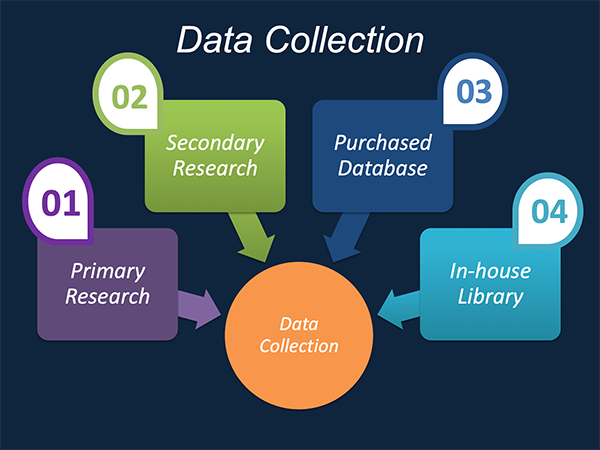
Data Synthesis: This stage includes the evaluation and assessment of all the data acquired from the primary and secondary research. It likewise includes in evaluating the information for any disparity watched while information gathering identified with the market. The data & information is gathered with consideration to the heterogeneity of sources. Scientific and statistical methods are implemented for synthesizing dissimilar information sets and provide the relevant data which is fundamental for formulating strategies. Our organization has broad involvement with information amalgamation where the information goes through different stages:


Market Formulation & Deduction: The last stage includes assigning the data & information in a suitable way in order to derive market size. Analyst reviews and domain based opinions based on holistic approach of market estimation combined with industry investigation additionally features a crucial role in this stage.
This stage includes with the finalization of the market size and numbers that we have gathered from primary and secondary research. With the data & information addition, we ensure that there is no gap in the market information. Market trend analysis is finished by our analysts by utilizing data extrapolation procedures, which give the most ideal figures to the market.
Data Validation: Validation is the most crucial step in the process. Validation & re-validation through scientifically designed technique and process that helps us finalize data-points to be used for final calculations. This stage also involves with the data triangulation process. Data triangulation generally implicates the cross validation and matching the data which has been collected from primary and secondary research methods.





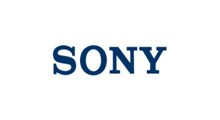

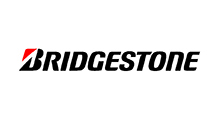

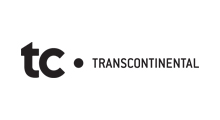















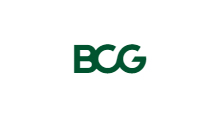


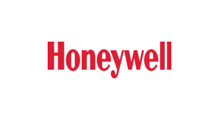

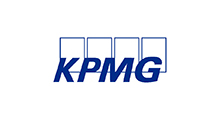
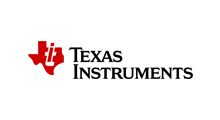



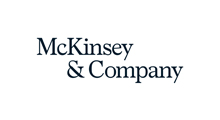

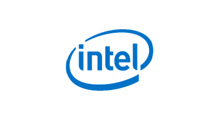







Free Customization
Countries can be added on demand
Free yearly update on purchase of Multi/Corporate User License
Companies served till date

We serve our customers 24x7 for 365 days through calls, emails and live chat options.

Huge database of exceptional market reports bringing market intelligence to your fingertips.

SSL enabled, we offer you various secured payment options for risk free purchase.